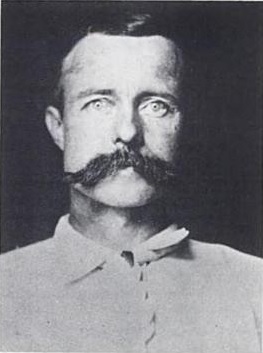Related Research Articles

Santa Rosa is a city in and the county seat of Sonoma County, in the North Bay region of the Bay Area in California. Its population as of the 2020 census was 178,127. It is the largest city in California's Wine Country and Redwood Coast. It is the fifth most populous city in the Bay Area after San Jose, San Francisco, Oakland, and Fremont; and the 25th-most populous city in California.

The Pacific Mail Steamship Company was founded April 18, 1848, as a joint stock company under the laws of the State of New York by a group of New York City merchants. Incorporators included William H. Aspinwall, Edwin Bartlett, Henry Chauncey, Mr. Alsop, G.G. Howland and S.S. Howland.

SS Winfield Scott was a sidewheel steamer that transported passengers and cargo between San Francisco, California and Panama in the early 1850s, during the California Gold Rush. After entering a heavy fog off the coast of Southern California on the evening of December 1, 1853, the ship crashed into Middle Anacapa Island. All 450 passengers and crew survived, but the ship was lost.

Buckskin Franklyn Leslie was a U.S. Army scout, gambler, bartender, rancher, miner, gunfighter, and con-man. He was known for his fringed buckskin jacket. He became famous in Tombstone, Arizona, for killing two men in self-defense. He married the widow of one of his victims eight days after killing her husband. Following their divorce, Leslie later shot and killed a woman he lived with at his ranch while drunk and in a fit of jealousy. He was sentenced to life in prison, but only served six years before he was pardoned. He was last listed in the U.S. Federal Census on January 27, 1920 in Sausalito, California. No public records of him have been found after this date, and it is not known when he died.

SS Valencia was an iron-hulled passenger steamer built for the Red D Line for service between Venezuela and New York City. She was built in 1882 by William Cramp and Sons, one year after the construction of her sister ship Caracas. She was a 1,598-ton vessel, 252 feet (77 m) in length. In 1897, Valencia was deliberately attacked by the Spanish cruiser Reina Mercedes off Guantanamo Bay, Cuba. The next year, she became a coastal passenger liner on the U.S. West Coast and served periodically in the Spanish–American War as a troopship to the Philippines. Valencia was wrecked off Cape Beale, which is near Clo-oose, on the west coast of Vancouver Island, British Columbia, on 22 January 1906. As her sinking killed 100 people, some classify the wreck of Valencia as the worst maritime disaster in the "Graveyard of the Pacific", a famously treacherous area off the southwest coast of Vancouver Island.

Point Arguello Lighthouse is a lighthouse on Point Arguello in Santa Barbara County, California, serving the Santa Barbara Channel on the Gaviota Coast adjoining Vandenberg Space Force Base near the city of Lompoc, California.

SS Pacific was a wooden sidewheel steamer built in 1850 most notable for its sinking in 1875 as a result of a collision southwest of Cape Flattery, Washington. Pacific had an estimated 275 passengers and crew aboard when she sank. Only two survived. Among the casualties were several notable figures, including the vessel's captain at the time of the disaster, Jefferson Davis Howell (1846–1875), the brother-in-law of former Confederate President Jefferson Davis. The sinking of Pacific killed more people than any other marine disaster on the West Coast at the time.

Dakota was a steamship built by the Eastern Shipbuilding Company of Groton, Connecticut for the Great Northern Steamship Company owned by railroad magnate James J. Hill to enhance and promote trade between the United States and Japan.

SS Abessinia was a cargo steamship of the Hamburg America Line (HAPAG). She was built in North East England in 1900, and wrecked in North East England in 1921. In her early years she sailed from Hamburg to and from China, Australia, and the East Coast of the United States. From 1907 to 1912 she sailed from Hamburg to and from the West Coast of the United States and the British Columbia Coast. In 1913 she survived a storm in the North Atlantic that swept away her rudder and disabled her propulsion. She spent the First World War in Chile. Her remains are now a wreck diving site in the Farne Islands.

Active was a survey ship that served in the United States Coast Survey, a predecessor of the United States Coast and Geodetic Survey, from 1852 to 1861. Active served on the U.S. West Coast. She conducted the Coast Survey's first reconnaissance from San Francisco, California, to San Diego, California, in 1852. Active sometimes stepped outside her normal Coast Survey duties to support U.S. military operations, serving as a troop transport and dispatch boat during various wars with Native Americans and during the San Juan Islands "Pig War" with the United Kingdom in 1859. She also rushed Union troops to Los Angeles, California, in 1861 during the early stages of the American Civil War.
Carrier Pigeon was an American clipper ship that was launched in the fall of 1852 from Bath, Maine. Her value was estimated at US$54,000. She was wrecked on her maiden voyage off the north coast of what was then Santa Cruz County in the state of California.

The Congress Mine is a gold mine located at the ghost town of Congress, Arizona, on the southeastern slope of the Date Creek Mountains, approximately 18 miles north-northeast of Wickenburg, Arizona, at an elevation of about 3,000 feet. The nearest community, four miles away, is modern Congress, formerly known as Congress Jct railroad station or Martinez Post Office. The Congress Mine produced substantial quantities of gold and was considered one of the most productive gold mines in Arizona.

The California Digital Newspaper Collection (CDNC) is a freely-available, archive of digitized California newspapers; it is accessible through the project's website. The collection contains over six million pages from over forty-two million articles. The project is part of the Center for Bibliographical Studies and Research (CBSR) at the University of California Riverside.

SS Oregon (1878–1906) was a coastal passenger/cargo ship constructed in Chester, Pennsylvania by the Delaware River Iron Ship Building and Engine Works in February 1878. Originally delivered to the Oregon Steamship Company, she was used on the Portland, Oregon-to-San Francisco, California route for many years. In 1879, the Oregon Railroad and Navigation Company became the Oregon′s new owners after purchasing the Oregon Steamship Company. Also included in this purchase were the steamships George W. Elder and City of Chester. While in O.R. & N service, Oregon served alongside SS Columbia, which made the first commercial use of Thomas Edison's incandescent light bulb. Like Oregon, Columbia was also built by John Roach & Sons in Chester, Pennsylvania. Over time, Oregon's hull became breached after a number of incidents. Furthermore, the hull had been weighted with concrete to the point where she was considered unsuitable for service as a passenger liner. After operating as a cargo ship, she was laid up in 1894 at Portland. In 1899, the Oregon was re-qualified to carry passengers once more. She was sold by O.R. & N the same year. Despite this, she was viewed as a cursed ship by her crew. On 26 December 1889 she sank Clan McKenzie in a collision in snow in the Columbia River at Coffee Rock 47 miles above Astoria, Oregon. Two of Clan McKenzie's crew killed, one injured. Her bow was damaged and she drifted ashore, later pulled off.

Boothill Graveyard is a small graveyard of at least 250 interments located in Tombstone, Cochise County, Arizona. Also known as the "Old City Cemetery", the graveyard was used after 1883 only to bury outlaws and a few others. It had a separate Jewish cemetery, which is nearby.

Fred Arthur Sutter Sr. was an Arizona attorney and politician. He ran several times, unsuccessfully, for governor of the state, and was elected several times to the state legislature.

Methven Castle was a steam iron passenger cargo ship built in 1882–1883 by Barclay, Curle & Company of Glasgow for Donald Currie & Co. with intention of serving as cargo, passenger and mail carrier on their existing route from England to South Africa. The vessel was later sold to the North American Mail Steamship Co. of Tacoma to work on their Oriental trade routes and renamed Columbia. In 1899 the ship was chartered by the United States Army to transport troops and supplies to various overseas destinations. In 1900 the Army bought out the ship placing it in service as the United States Army Transport Rosecrans but sold it two years later to Matson Navigation Company. The vessel was then converted into an oil tanker to carry oil from the West Coast to Alaska and Hawaii. Subsequently she was sold in 1905 to Associated Oil Co. to carry oil from California to various ports along the Pacific Northwest and Hawaii. In January 1913 while on one of her regular trips, the ship was wrecked off the mouth of the Columbia River with the loss of almost her entire crew.

Ancon was an ocean-going wooden sidewheel steamship built in San Francisco in 1867. She carried both passengers and freight. In her early career she was a ferry in Panama and then ran between Panama and San Francisco. Later she began coastal runs between San Diego and San Francisco. Her last route was Port Townsend, Washington to Alaska. Today she is more notable for her disasters than her routine voyages. Ancon Rock in Icy Strait, Alaska is the site of her 1886 grounding. Her final wreck, in 1889 in Naha Bay, near Loring, Alaska was commemorated by Albert Bierstadt. His painting, "Wreck of the 'Ancon' in Loring Bay, Alaska" now hangs in the Museum of Fine Art in Boston.

Idaho was a wooden steamship built for Pacific Coast passenger and freight service. She was launched in 1866 and wrecked in 1889. She was one of the first ocean-going steamships to provide regular service to the northwest coast of North America.

The S.S. Golden Gate was a mail and passenger steamer that operated between San Francisco and Panama City from 1851 to 1862. On its last voyage from San Francisco it caught fire and was destroyed with the loss of 204 lives off Manzanillo, Colima, Mexico. The ship was carrying $1,400,000 in gold coins for Wells Fargo, as well as large amounts of gold and coins for the passengers. Much of this was retrieved, but amateurs continue to search for gold with metal detectors on what is now called the Playa de Oro.
References
- 1 2 "Blames Sea Captain For Loss of Life". The New York Times . July 9, 1911. Retrieved 1 June 2018.
- ↑ Redmon, Michael (7 December 2006). "What is the story of the wreck of the Santa Rosa?". Santa Barbara Independent. Retrieved 12 December 2018.